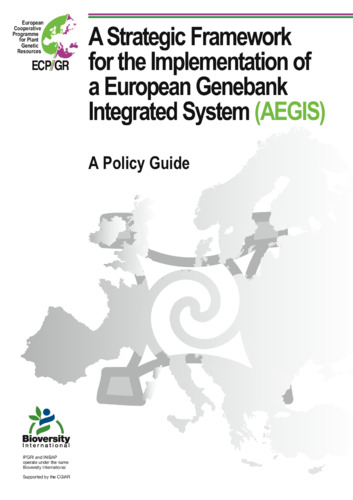A strategic framework for the Implementation of a European Genebank Integrated System (AEGIS): A policy guide
The aim of this paper is to put the vision of future task sharing among genebanks and other germplasm collection holders in Europe into the context of its possible implementation process. The paper aims at raising awareness and encouraging further debate about the technical and policy issues associated with developing such an ambitious system, at all stakeholder levels. This publication provides direction and guidance to the ECPGR member countries, through reflecting on the status of an important process at this particular point in time. It is a summary of the general views of the ECPGR Steering Committee on sharing responsibilities and it provided the basis for the development of the Collective Memorandum of Understanding. During its Eleventh Meeting in Sarajevo in September 2008, the Steering Committee endorsed the content of this publication (formerly a “discussion paper”) and requested the Secretariat to publish it as a Policy Guide. This paper is part of an “evolution” leading to the development of the final product, a European Genebank Integrated System (AEGIS). AEGIS was conceived at a time when the International Treaty on Plant Genetic Resources for Food and Agriculture (ITPGRFA) had just been ratified by most countries of the European Region and the Governing Body of the International Treaty had held its first meeting and agreed on a standard Material Transfer Agreement, i.e. in June 2006 in Madrid, Spain. The concept of AEGIS is intended to be fully supportive of the Treaty and to contribute to its rapid implementation. It is hoped that this paper will contribute towards stimulating further discussions at the national and (sub-) regional levels as well as promoting progress of the process which will potentially result in an integrated genebank system, which will enable managing the very precious plant genetic resources existing in all European countries in the most rational way, leading to their safe conservation, availability and easy accessibility for users.

